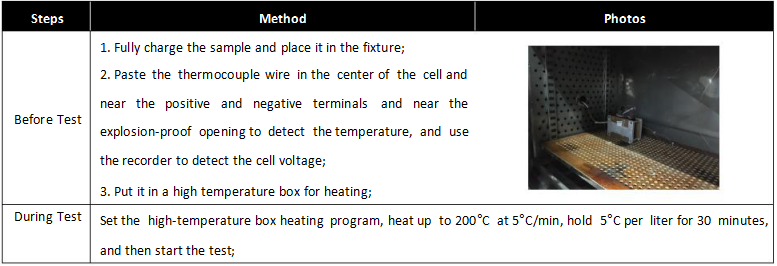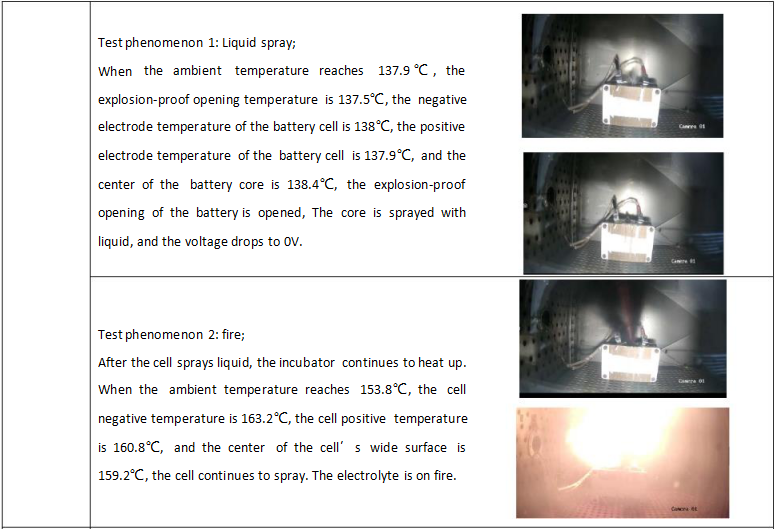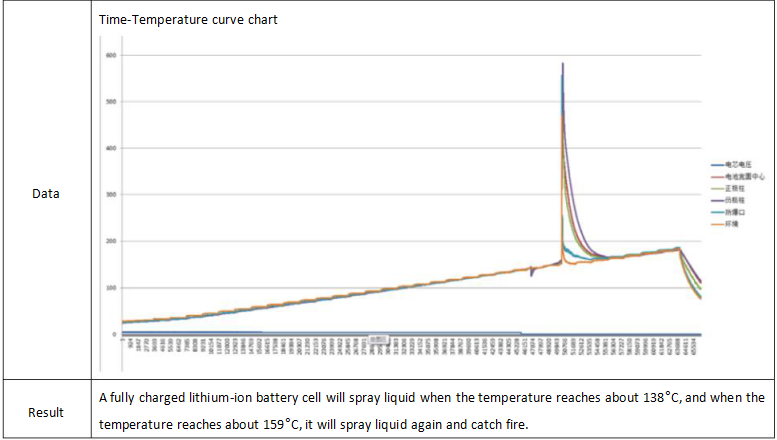In recent years, reports of fires and even explosions caused by lithium-ion batteries are common.Lithium-ion batteries are mainly composed of negative electrode material, electrolyte and positive electrode material. The chemical activity of the negative electrode material graphite in the charged state is a bit like metal lithium. The SEI film on the surface would decompose at high temperature, and the lithium ions embedded in the graphite would react with the electrolyte and the binder polyvinylidene fluoride and finally would release a lot of heat.
Alkyl carbonate organic solutions are commonly used as electrolytes, which are flammable. The positive electrode material is usually a transition metal oxide, which has strong oxidizing properties in the charged state, and easily decomposes to release oxygen at high temperature. The released oxygen reacts with the electrolyte to oxidize, and then comes out a lot of heat.
Apperately, the lithium ion battery would be unstable when heating with high temperature. However, what exactually would happen if we keep heating the battery? Here we conduceted a real testing to a fully charged NCM cell with voltage of 3.7 V and capacity of 106 Ah.
Testing Methods:
1. At room temperature (25±2℃), the single cell is first discharged to the lower limit voltage with a current of 1C and left for 15 minutes. Then use 1C constant current to charge to the upper limit voltage and switch to constant voltage charging, stop charging when the charging current drops to 0.05C, and put it aside for 15 minutes after charging;
2. Increase the temperature from room temperature to 200°C at 5°C/min, and keep at 5°C per liter for 30 minutes;
Conclusion:
Lithium cells will eventually catch fire when the test temperature is continuously increased. From the above process we first see the exhaust valve opened, the liquid ejected; as the temperature rises further, the second liquid ejection occured and start combustion. The battery cells failed at around 138°C, which was already higher than the common standard test temperature of 130°C.
Post time: Jan-27-2021



